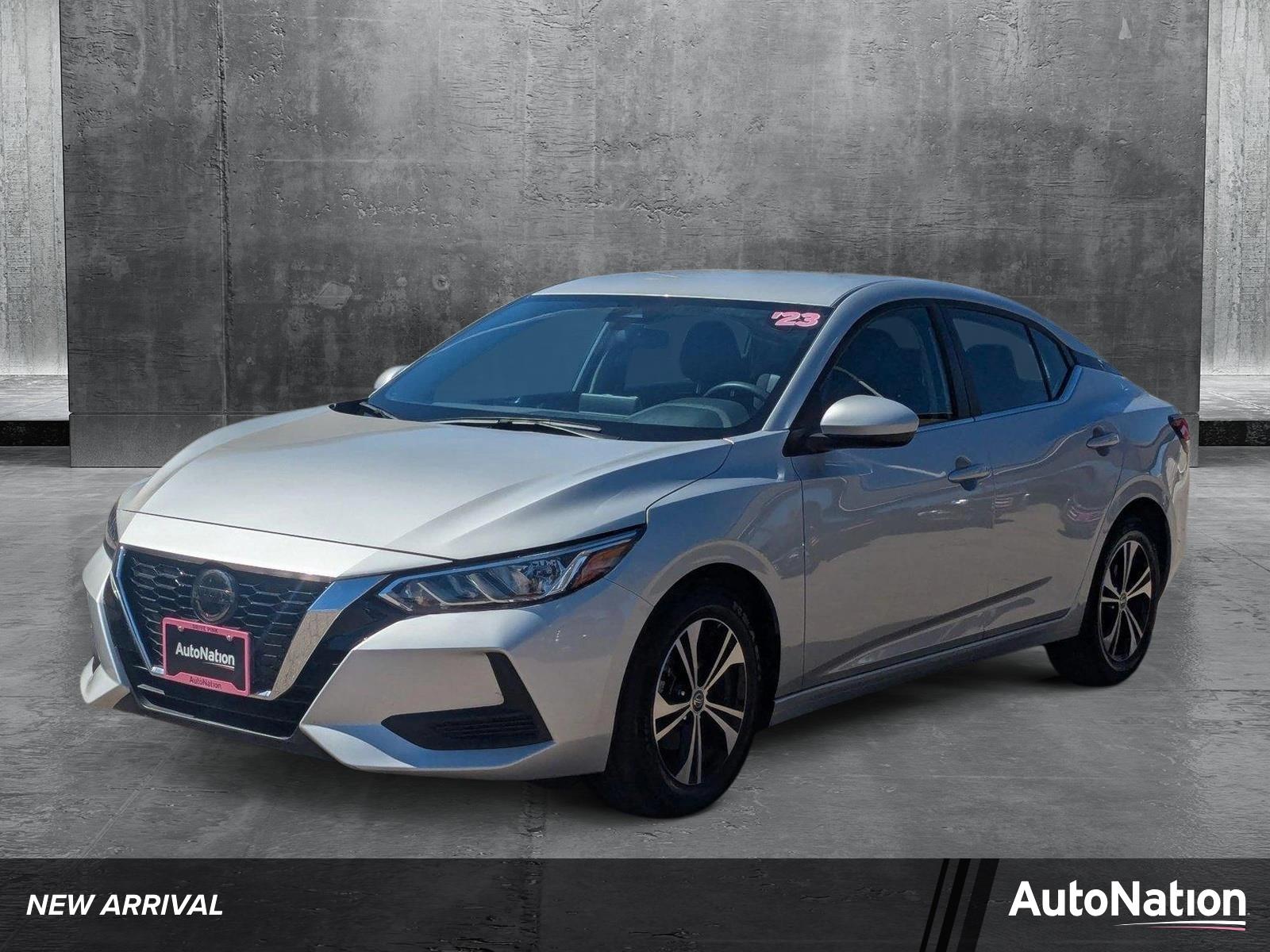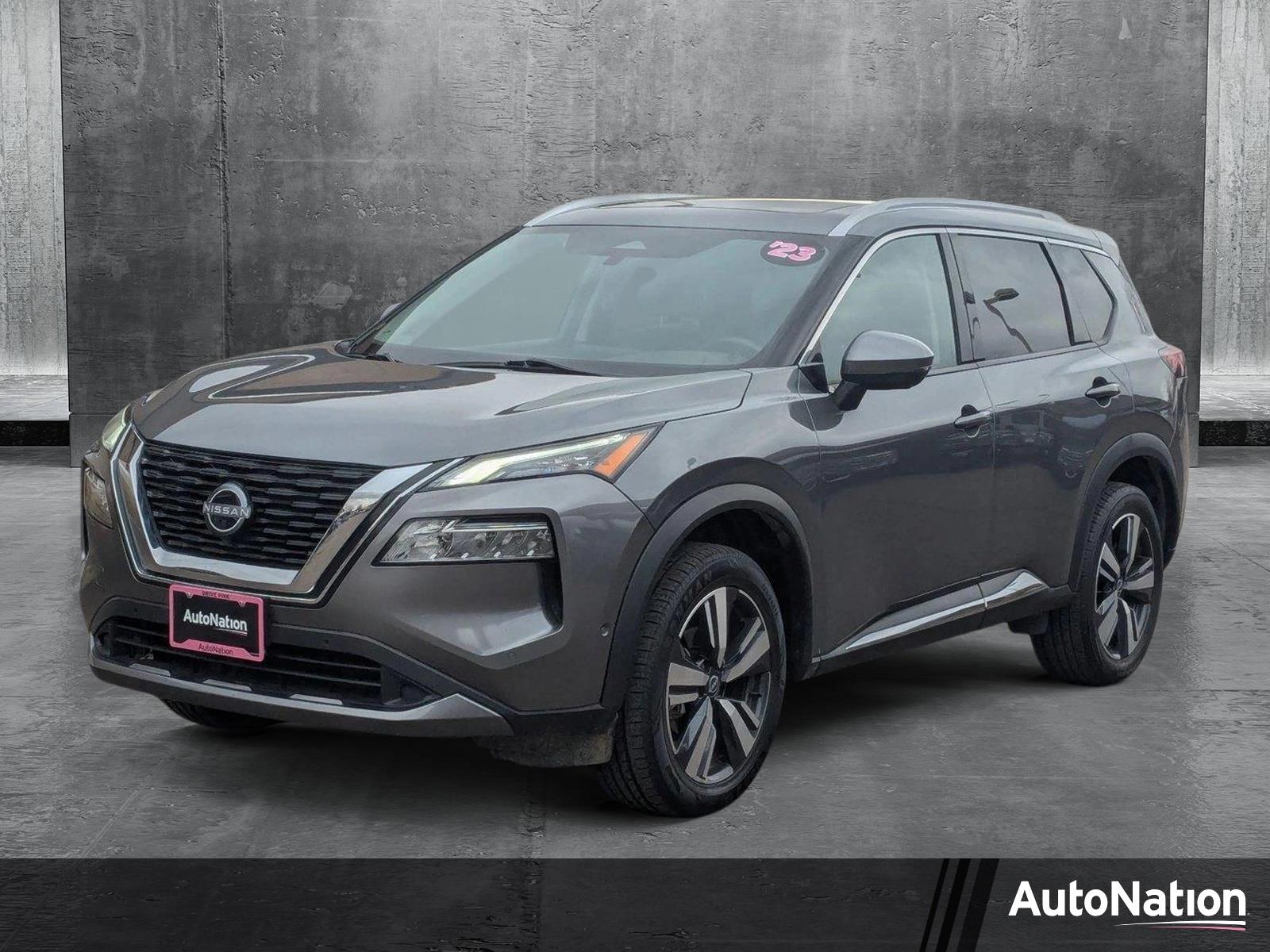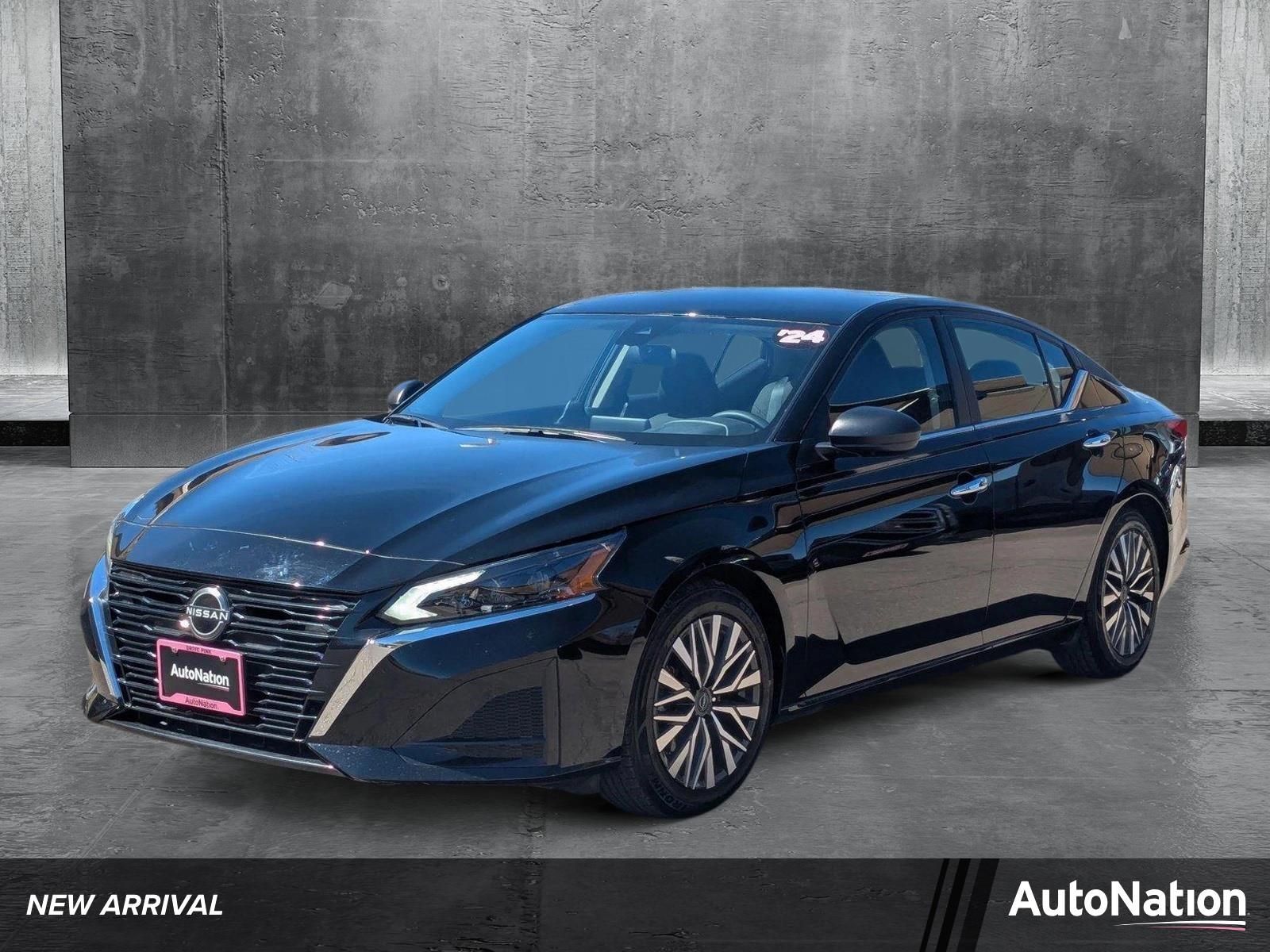AutoNation is Your Electric Vehicle Dealer in LONE TREE
Whether you are looking for an all-electric vehicle (EV) or a plug-in hybrid, you'll find Buick, GMC electric cars for sale in LONE TREE at AutoNation Buick GMC Park Meadows near Aurora and Denver.
Shop the current selection of new and used electric cars, hybrids and plugin-hybrids for sale AutoNation Buick GMC Park Meadows, or learn more about Buick, GMC electric vehicles and contact us for any questions about this exciting new era in the world of automotive.
Shop the current selection of new and used electric cars, hybrids and plugin-hybrids for sale AutoNation Buick GMC Park Meadows, or learn more about Buick, GMC electric vehicles and contact us for any questions about this exciting new era in the world of automotive.
Buick, GMC Electric Vehicle Lineup
2022 Hummer EV
The very first ever GMC Hummer EV will be readily available soon at your local truck dealer in LONE TREE. The new Hummer "supertruck" boasts an innovative interior, exterior and security features like no GMC truck has ever seen. With up to one thousand horsepower, 11,500 lb-ft of torque, going 0-60 in three seconds and featuring new Crabwalk technology, the Hummer EV will truly amaze you. Electric vehicles are exploding in popularity, primarily for how financially & environmentally responsible they are.
But the best feature of the new Hummer EV is that it's changing the future of electric and zero emission vehicles without compromising power or performance.
The Hummer EV comes in four different trims, and rest assured that each one is perfect for LONE TREE and Colorado life. Take a look below to learn more about the Hummer EV and explore different options to find the perfect Hummer EV for you. If you have any questions about the new Hummer EV or any other vehicle we have in stock, don't hesitate to contact us at (720) 836-7095. We here at AutoNation Buick GMC Park Meadows look forward to helping you learn more about the highly anticipated and revolutionary Hummer EV.
Learn more: New 2025 GMC HUMMER EV colors, prices, specs & features
The Hummer EV comes in four different trims, and rest assured that each one is perfect for LONE TREE and Colorado life. Take a look below to learn more about the Hummer EV and explore different options to find the perfect Hummer EV for you. If you have any questions about the new Hummer EV or any other vehicle we have in stock, don't hesitate to contact us at (720) 836-7095. We here at AutoNation Buick GMC Park Meadows look forward to helping you learn more about the highly anticipated and revolutionary Hummer EV.
Learn more: New 2025 GMC HUMMER EV colors, prices, specs & features
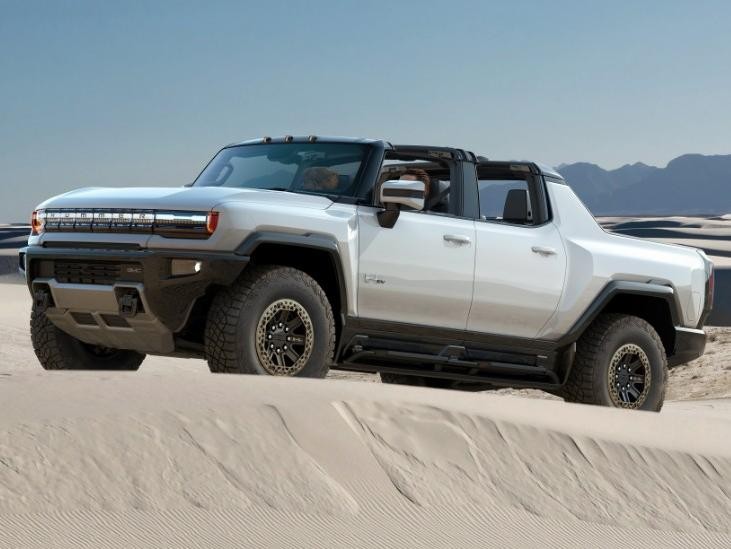
Sierra Denali EV
GMC will soon have not one, but two electric pickup trucks when the 2024 Sierra EV arrives to complement the massive, over-the-top Hummer EV pickup. The Sierra is meant to be a more utilitarian choice, and like its gasoline stablemate, it shares much with its Chevrolet-badged sibling, the Silverado EV. Even still, the launch model is the highly luxurious Denali Edition 1, which has a 754-horsepower two-motor, all-wheel-drive powertrain, claims 440 miles of range, and will cost nearly $100,000. Additional models, including the Elevation and AT4, will follow for 2025 with lower starting prices and less ambitious performance claims. The Sierra EV will be offered only as a crew cab with a 5 foot 11 inch bed.
RESERVATIONS ARE CURRENTLY FULL
MSRP: $97,500*
KEY FEATURES
RESERVATIONS ARE CURRENTLY FULL
MSRP: $97,500*
KEY FEATURES
- GM-estimated range of 440 miles
- 754 hp* and 785 lb-ft of torque
- 0-60 mph in less than 4.5 seconds
- Max trailering up to 10,000 lbs
- Available Super Cruise* driver-assistance technology
- 4-Wheel Steer with CrabWalk
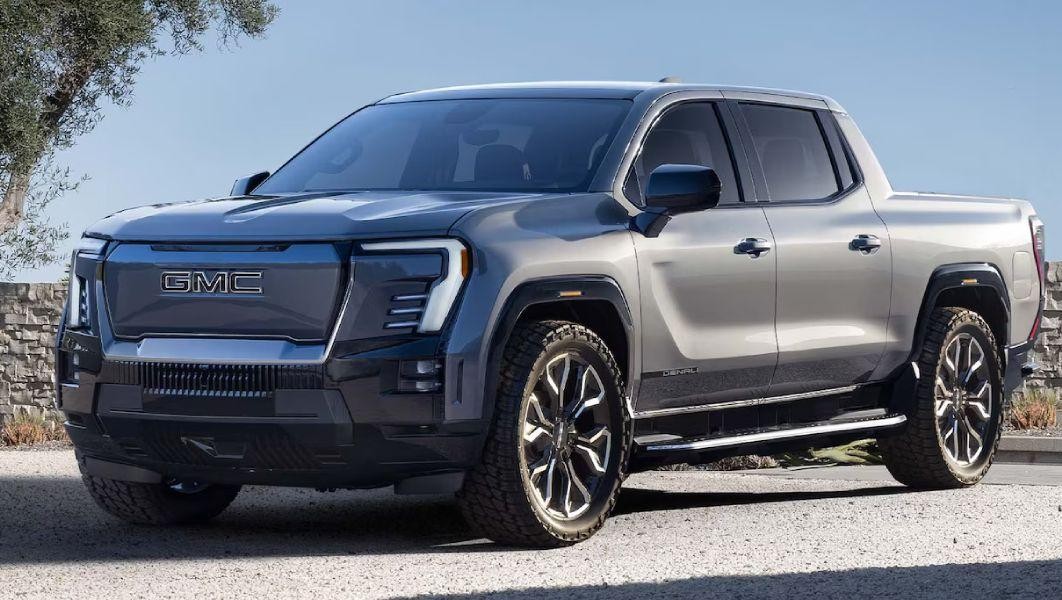
What is an Electric Car?
A modern electric car is a sleek, technologically advanced vehicle powered entirely by electricity. Unlike traditional gasoline-powered cars, electric cars use batteries to store energy and electric motors to drive the wheels. This design offers a quiet and smooth driving experience, with instant torque for quick acceleration. Modern electric cars come equipped with various smart features, such as advanced driver-assistance systems, large touchscreens, and over-the-air software updates. They also typically have regenerative braking systems that help recharge the battery while driving. With increasing ranges—some models offering over 300 miles on a single charge—electric cars are becoming more practical for everyday use. They are also eco-friendly, producing zero emissions and contributing to a cleaner environment.
The Different Kinds of EVs
Electric vehicles (EVs) come in three main types: full electric vehicles (also known as battery electric vehicles or BEVs), hybrid vehicles (HEVs), and plug-in hybrid vehicles (PHEVs). Each type has its unique characteristics and benefits, catering to different driving needs and preferences.
Full electric vehicles (BEVs) run entirely on electricity, with no internal combustion engine. They rely on a large battery pack to power an electric motor, which drives the wheels. BEVs are known for their zero emissions, making them an environmentally friendly option. They offer a quiet, smooth ride and often feature advanced technology and connectivity. The range of BEVs varies depending on the model and battery capacity, with some newer models offering over 300 miles on a single charge. Charging can be done at home, at work, or at public charging stations, and with advancements in fast-charging technology, it's becoming more convenient to keep them powered up.
Hybrid vehicles (HEVs) combine a gasoline engine with an electric motor and a smaller battery. The electric motor assists the gasoline engine during acceleration and can also power the vehicle at low speeds, improving fuel efficiency and reducing emissions. The battery is recharged through regenerative braking and the internal combustion engine, meaning HEVs don't require external charging. Hybrids are a good choice for those looking to improve fuel economy without relying solely on electric power.
Plug-in hybrid vehicles (PHEVs) offer a middle ground between BEVs and HEVs. PHEVs have both an electric motor and a gasoline engine, but they come with a larger battery than standard hybrids, allowing them to operate solely on electric power for a limited range—usually between 20 to 50 miles, depending on the model. After the electric range is depleted, the gasoline engine takes over, making PHEVs versatile for both short trips and longer journeys. They can be plugged in to charge the battery, offering the convenience of driving on electricity while still having the backup of a gasoline engine for extended range. This flexibility makes PHEVs an attractive option for drivers who want to reduce their carbon footprint without worrying about range limitations.
Full electric vehicles (BEVs) run entirely on electricity, with no internal combustion engine. They rely on a large battery pack to power an electric motor, which drives the wheels. BEVs are known for their zero emissions, making them an environmentally friendly option. They offer a quiet, smooth ride and often feature advanced technology and connectivity. The range of BEVs varies depending on the model and battery capacity, with some newer models offering over 300 miles on a single charge. Charging can be done at home, at work, or at public charging stations, and with advancements in fast-charging technology, it's becoming more convenient to keep them powered up.
Hybrid vehicles (HEVs) combine a gasoline engine with an electric motor and a smaller battery. The electric motor assists the gasoline engine during acceleration and can also power the vehicle at low speeds, improving fuel efficiency and reducing emissions. The battery is recharged through regenerative braking and the internal combustion engine, meaning HEVs don't require external charging. Hybrids are a good choice for those looking to improve fuel economy without relying solely on electric power.
Plug-in hybrid vehicles (PHEVs) offer a middle ground between BEVs and HEVs. PHEVs have both an electric motor and a gasoline engine, but they come with a larger battery than standard hybrids, allowing them to operate solely on electric power for a limited range—usually between 20 to 50 miles, depending on the model. After the electric range is depleted, the gasoline engine takes over, making PHEVs versatile for both short trips and longer journeys. They can be plugged in to charge the battery, offering the convenience of driving on electricity while still having the backup of a gasoline engine for extended range. This flexibility makes PHEVs an attractive option for drivers who want to reduce their carbon footprint without worrying about range limitations.
Electric vs. Plug-in Hybrid
In addition to hybrid vehicles and fully electric cars, there is a third breed of new electric vehicle technology: The Plug-in Hybrid.
What is the difference between a fully electric car, a standard hybrid and a plug-in hybrid? Like hybrid cars, plug-in hybrids have both electric and gas motor. The major difference is that on a plug-in hybrid, the gas motor is held in reserve in case your battery runs out of change. In other respects, a plug-in hybrid functions more like a fully electric car, in that it primarily relies on an electric motor, powered by a large battery that you plug in to charge.
Electric vs. Plug-in Hybrid
Plug-in hybrid
- Primary propulsion: electric motor, supplementary gas motor
- Fuel: Electric battery, backup gas fuel tank available
- Range: Battery range + gas fuel tank
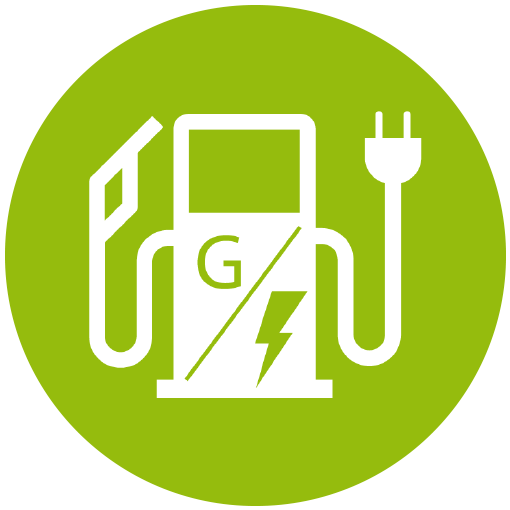
Electric Cars
Electric Cars
- Primary propulsion: electric motor
- Fuel: Electric battery
- Range: Battery range
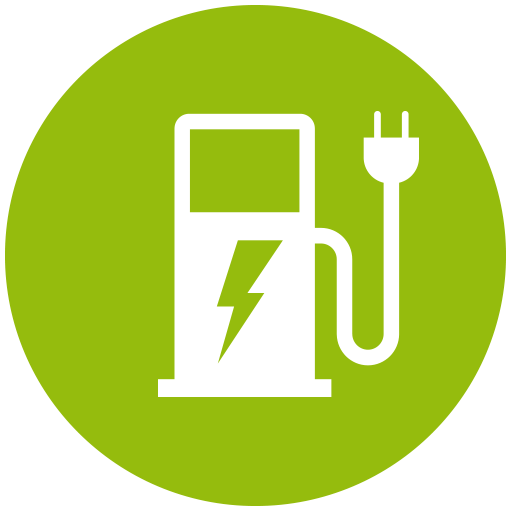
Standard hybrid
Standard hybrid
- Primary propulsion: electric motor, supplementary electric motor
- Fuel: Gas, supplementary passive-charging battery
- Range: Gas fuel tank range

Find a Charger Near You
Use the map below to find a charger near you. The map is powered by ChargeHub and is constantly being updated with all the latest charging networks.
Electric Vehicle Frequently Asked Questions
One of the many benefits of owning an all-electric vehicle (EV) is that you'll never need to visit a gas station. And charging it is as simple as plugging in a power cord, just like any other household electronic device. But since electric vehicles are essentially a complex, self-contained power plant, there's value in understanding the various aspects that affect charging performance, battery health, and cost of ownership. Keep reading for answers to some of the most commonly asked questions regarding the charging and regular maintenance of an all-electric vehicle.
What Are the Basics of Charging an Electric Vehicle?
Every electric vehicle can be charged by plugging in the appropriate cable into any household power outlet. This method is called Level 1 charging, and is accomplished with the power cord that's included as part of the lease or purchase of the electric vehicle.
This is the most convenient form of charging because all you need is access to a standard electrical outlet found in the garage or on the outside of your home - there's no setup or modifications required. But since the battery capacity of an electric vehicle is quite large, and household electrical systems aren't industrial strength by nature, Level 1 charging is the slowest method of replenishing power.
What Is Level 2 Charging?
Waiting nearly two days to charge your vehicle is obviously not ideal, which is why all electric vehicles offer a faster charging speed obtained via Level 2 charging. This higher power delivery is most commonly found in commercial parking lots in malls or shopping centers, and also designated EV parking spaces in office complexes. Some Level 2 charging stations are offered as complimentary perks, but others may require a paid subscription or one-time payment to activate charging - the electricity you're using isn't free after all. Level 2 charging significantly speeds up the process, with many electric vehicles reaching an optimal operating range after about 4 to 8 hours of being plugged in. Keep in mind that the power delivered by Level 2 charging stations can vary, and ultimately, your vehicle is in control of how quickly it can charge.
The speed and convenience of Level 2 charging can be had in your home too, but it may require professional installation of charging equipment, and possibly modification of your home's electrical panel if there isn't enough capacity.
What Is Quick Charging?
"Quick Charging" or Level 3 charging is the fastest form of recharging available today, and can only be found at dedicated stations which require a subscription or payment. But the benefits are well worth the cost, especially if you're taking a long road trip or forgot to charge your vehicle the day before.
Today's newest electric vehicles are really able to take advantage of Level 3 charging. When connected to a 350 kW DC fast charger, your electric vehicle will charge the fastest!
Where Are Charging Stations Located?
With electric vehicles becoming more popular, charging stations are easier to find than ever, especially if you live in a large metropolitan area. Many major malls, grocery stores, and office buildings have dedicated EV parking spaces with charging stations, and more "EV rest stops" are popping up alongside America's most popular freeways.
EVgo, Electrify America, and ChargePoint are examples of the growing networks of charging stations in the country, and finding specific charging stops is as simple as visiting a website or mobile app. Many EVs will already have these charging locations programmed in the navigation system, and Android Auto or Apple CarPlay will also have this information on-hand.
When Is the Best Time to Charge an Electric Vehicle?
In some ways, EVs are just like your smartphone, in that the best time to charge it is, honestly, whenever you have convenient access to power. This could be when you're at work, shopping for groceries, or simply parked at home for the evening.
Because the element of time is unavoidable with electric charging, I personally like to always top off whenever I can so I don't end up with a low battery and "range anxiety." When charging at home, utilize the EV's built-in scheduling function to automatically charge during non-peak hours to reduce electric bill costs and network load.
What is MPGe?
In the past, the vast majority of vehicles on the road were fueled by gas or diesel. So it made sense to measure efficiency by how many miles a vehicle could travel on a gallon. Hence the familiar MPG on the window sticker.
But when the automotive industry began to pivot toward electric vehicles, the Environmental Protection Agency (EPA) needed a new measurement. MPGe stands for "miles per gallon equivalent." In creating the MPGe standard, the EPA based it around the fact that the energy in a gallon of gasoline was equivalent to 33.7 kilowatt-hours (kWh).
What Are the Basics of Charging an Electric Vehicle?
Every electric vehicle can be charged by plugging in the appropriate cable into any household power outlet. This method is called Level 1 charging, and is accomplished with the power cord that's included as part of the lease or purchase of the electric vehicle.
This is the most convenient form of charging because all you need is access to a standard electrical outlet found in the garage or on the outside of your home - there's no setup or modifications required. But since the battery capacity of an electric vehicle is quite large, and household electrical systems aren't industrial strength by nature, Level 1 charging is the slowest method of replenishing power.
What Is Level 2 Charging?
Waiting nearly two days to charge your vehicle is obviously not ideal, which is why all electric vehicles offer a faster charging speed obtained via Level 2 charging. This higher power delivery is most commonly found in commercial parking lots in malls or shopping centers, and also designated EV parking spaces in office complexes. Some Level 2 charging stations are offered as complimentary perks, but others may require a paid subscription or one-time payment to activate charging - the electricity you're using isn't free after all. Level 2 charging significantly speeds up the process, with many electric vehicles reaching an optimal operating range after about 4 to 8 hours of being plugged in. Keep in mind that the power delivered by Level 2 charging stations can vary, and ultimately, your vehicle is in control of how quickly it can charge.
The speed and convenience of Level 2 charging can be had in your home too, but it may require professional installation of charging equipment, and possibly modification of your home's electrical panel if there isn't enough capacity.
What Is Quick Charging?
"Quick Charging" or Level 3 charging is the fastest form of recharging available today, and can only be found at dedicated stations which require a subscription or payment. But the benefits are well worth the cost, especially if you're taking a long road trip or forgot to charge your vehicle the day before.
Today's newest electric vehicles are really able to take advantage of Level 3 charging. When connected to a 350 kW DC fast charger, your electric vehicle will charge the fastest!
Where Are Charging Stations Located?
With electric vehicles becoming more popular, charging stations are easier to find than ever, especially if you live in a large metropolitan area. Many major malls, grocery stores, and office buildings have dedicated EV parking spaces with charging stations, and more "EV rest stops" are popping up alongside America's most popular freeways.
EVgo, Electrify America, and ChargePoint are examples of the growing networks of charging stations in the country, and finding specific charging stops is as simple as visiting a website or mobile app. Many EVs will already have these charging locations programmed in the navigation system, and Android Auto or Apple CarPlay will also have this information on-hand.
When Is the Best Time to Charge an Electric Vehicle?
In some ways, EVs are just like your smartphone, in that the best time to charge it is, honestly, whenever you have convenient access to power. This could be when you're at work, shopping for groceries, or simply parked at home for the evening.
Because the element of time is unavoidable with electric charging, I personally like to always top off whenever I can so I don't end up with a low battery and "range anxiety." When charging at home, utilize the EV's built-in scheduling function to automatically charge during non-peak hours to reduce electric bill costs and network load.
What is MPGe?
In the past, the vast majority of vehicles on the road were fueled by gas or diesel. So it made sense to measure efficiency by how many miles a vehicle could travel on a gallon. Hence the familiar MPG on the window sticker.
But when the automotive industry began to pivot toward electric vehicles, the Environmental Protection Agency (EPA) needed a new measurement. MPGe stands for "miles per gallon equivalent." In creating the MPGe standard, the EPA based it around the fact that the energy in a gallon of gasoline was equivalent to 33.7 kilowatt-hours (kWh).
Electric Vehicles For Sale
Pre-Owned 2023 Nissan Sentra SV 3N1AB8CV0PY284012 Nissan
- AutoNation Price $19,544
- Miles
- 31,151
- Exterior
- Brilliant Silver Metallic
- Engine
- 2.0 LITER
Pre-Owned 2023 Nissan Rogue SL 5N1BT3CA5PC785013 Nissan
- AutoNation Price $21,349
- Miles
- 50,909
- Exterior
- Gun Metallic
- Engine
- 1.5 LITER
Pre-Owned 2024 Nissan Altima 2.5 SV 1N4BL4DV4RN365400 Nissan
- AutoNation Price $21,999
- Miles
- 18,515
- Exterior
- Super Black
- Engine
- 2.5 LITER
Pre-Owned 2022 Tesla Model Y Long Range 7SAYGDEE7NF324648 Tesla
- AutoNation Price $29,999
- Miles
- 36,250
- Exterior
- Pearl White Multi-Coat
- Engine
- DUAL MOTOR - ST



